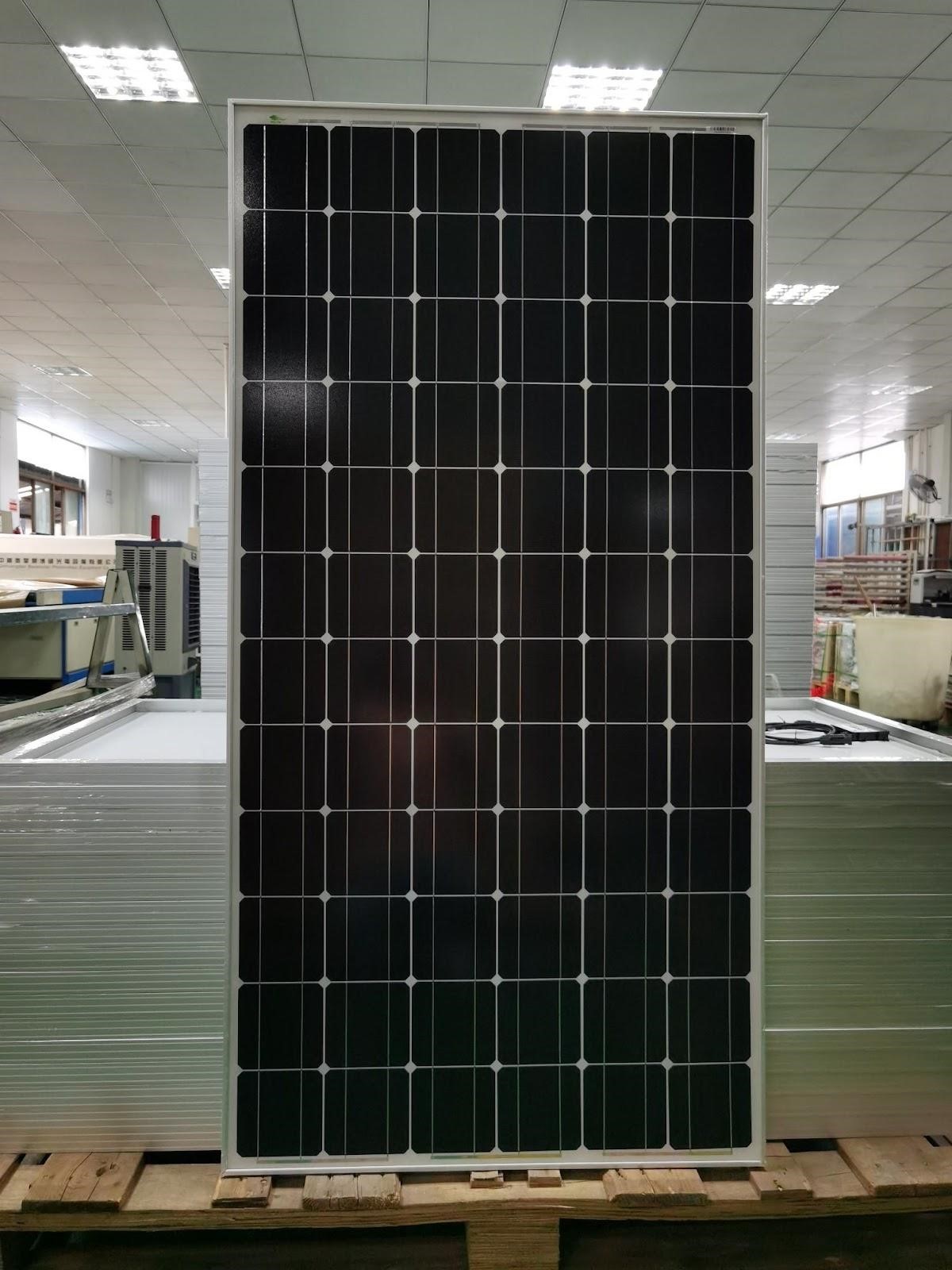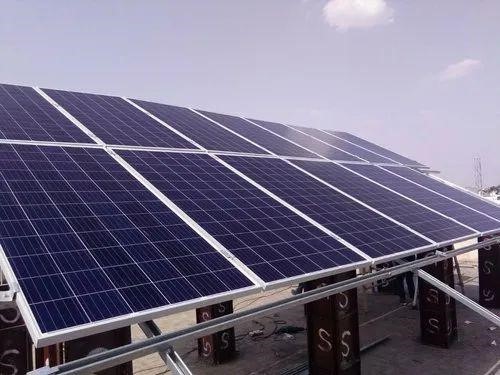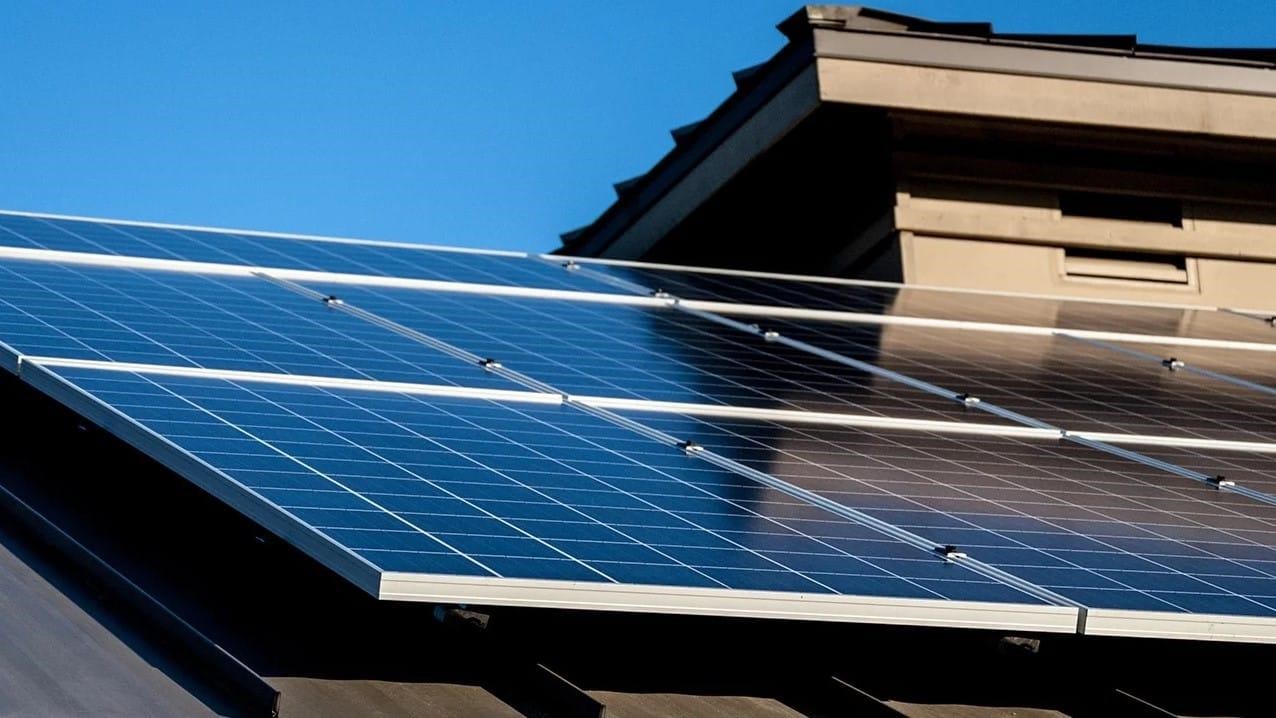Over the past few years, we have been researching and learning about different solar photovoltaic solar panel (PV) sizes and how they impact the overall performance of building a photovoltaic solar panel.
PV solar panels come in various sizes and have several advantages, making them a popular option for producing sustainable energy and reducing reliance on conventional power sources.
And yes, one thing certain is that choosing the wrong size can result in wasted resources and lost savings.
This is what we’re trying to avoid, so read on!
Different Sizes of Solar Photovoltaic Panels
Three main PV solar panel types are monocrystalline, polycrystalline, and thin or flexible film.
Find the answer to the question, how big are solar panels?
Monocrystalline Solar Panels

A monocrystalline solar panel is made from single-crystal silicon and is the most reliable type of solar panel.
They have a uniform black colour and rounded edges — popularly used residential solar panels.
A monocrystalline residential solar panel typically comes in two sizes: 60-cell and 72-cell.
The 60-cell panels are about 65 by 39 inches and have a power output of around 280-320 watts, and the 72-cell panels are about 77 by 39 inches and have more power output of around 340-400 watts.
One of the heaviest was Canadian Solar, which weighs as much as 50 pounds.
Polycrystalline Solar Panels

These solar panels are made from melted multiple small silicon crystals and have a distinctive blue colour.
They are slightly less competent than monocrystalline PV cells but are also less expensive.
Polycrystalline panels come in different sizes, from small-weight panel options for portable use to large-weight commercial solar panels.
Typical sizes for commercial installations include the following:
- 60-cell panels: 65 by 39 inches, with an electrical output of around 280-320 watts)
- 72-cell panels: 77 by 39 inches, with an electrical output of around 340-400 watts)
Polycrystalline is also a good source for residential solar panels.
Thin-Film Solar Panels

These solar cells are made by depositing a thin layer of photovoltaic material onto a substrate such as glass, plastic, or metal.
They are less efficient than crystalline cells but are sleek weight, flexible, and can be made in various sizes and shapes.
TF solar panels come in two main types: amorphous silicon and cadmium telluride.
- Amorphous silicon solar cells are typically used for small solar panels such as portable solar chargers and come in square foot sizes.
- Cadmium telluride solar cells are used for larger-scale applications such as utility-scale solar farms and can be as large as several feet wide and up to 10 feet long.
Factors to Consider When Choosing Solar Photovoltaic Panel Size
Apart from knowing how to install a solar panel, there are several factors to consider when choosing a solar panel size.
Roof Space
The available space will determine the system size and how many solar panels can be installed on your roof.
You must install the solar panels you need where it receives maximum sunlight since the energy they generate is directly proportional to the amount of sunlight they receive.
Solar cells should be installed at an optimal angle and direction to receive the most sunlight to maximise energy production.
How many panels you need will depend on the available roof space, as larger solar cells require more roof area.
Solar System Capacity
If the capacity is too low, the solar system will not generate enough electric energy to meet the property’s energy demands; If the capacity is too high, it will generate more energy than needed, resulting in wastage.
The capacity of a solar system is measured in kilowatt-hours (kWh) and is determined by the total power rating of all the solar panels installed.
The solar system’s capacity should match your property’s energy consumption and be in conjunction with the available area on your roof.
Budget
Choosing the right size panels will help you stay within your budget and maximise your investment.
In addition to the cost of photovoltaic solar panels, other factors that can affect the overall expenses of a solar system include installation fees, equipment, and maintenance expenses.
Many states and local governments offer tax credits or rebates to incentivise the installation of solar systems. Federal tax credits are also available for solar installations.
Checking different manufacturers (like Canadian Solar and Hanwha Q cells) helps.
Pros and Cons of Photovoltaic Solar Panel Sizes
Recognising the advantages and disadvantages of solar panel size is important in understanding photovoltaic vs solar panels.
Continue reading to discover which standard solar panel size is better.
Monocrystalline Panels
Monocrystalline solar cells have several benefits, making them popular among homeowners and businesses.
While they are the most effective solar cell on the market, several advantages and disadvantages also come with monocrystalline solar panels.
Pros
Here are some of the benefits of monocrystalline panels:
- Higher electrical output, efficiency at 15-20% – are made from a higher grade of silicon, which is more efficient at converting sunlight into more electricity per square foot.
- Most durable – due to higher-quality materials and construction, they can maintain their performance over a longer period. Plus, warranties range from 25 to 30 years.
- Less space – because they produce higher solar power, they can generate solar energy without extra roof area.
Cons
Here are some of the drawbacks of monocrystalline panels:
- Higher cost – these solar cells are more expensive than others because of their high efficiency and durability.
- Low performance in low-light conditions – designed to work best in direct sunlight.
- Carbon footprint – producing these solar cells still requires a certain amount of energy and resources, including high-grade silicon, which can have environmental impacts.
Polycrystalline Panels
The polycrystalline panel is also the standard size for residential and commercial panels.
These solar cells are made from multiple silicon crystals, which are melted to form a solar array.
Pros
Here are some of the benefits of a polycrystalline solar panel:
- Lower cost – These commercial solar panels are known for being more affordable than their monocrystalline counterparts.
- Good performance in high temperatures – they are less affected by heat.
- Durable – these can last for many years of use.
Cons
Here are some of the drawbacks of a polycrystalline solar panel:
- Lower efficiency, 13% to 16% efficiency – they require more area to generate the same amount of electrical output as a monocrystalline solar panel.
- Uses a larger rooftop area – because they use less pure silicon, you will need more solar panels.
- Less uniform appearance – this solar panel tends to be larger and bulkier than other panels, making it more difficult to install seamlessly into a building’s design.
Thin-Film Panels
This solar panel is a photovoltaic (PV) panel that offers several advantages over the standard solar panel size, making them a good alternative.
Pros
Some of the benefits of this solar panel type include:
- Sleek weight and flexibility – because of its weight, this solar panel is easier to install in different locations.
- Aesthetically pleasing – this solar panel has a sleek and modern appearance that can blend well with residential and commercial solar installations where aesthetics are an important consideration.
- Lower cost – if you compare multiple quotes on how much solar panels are, this solar panel size and type is generally less expensive than other large panels.
Cons
Some of the drawbacks of this solar panel type include the following:
- Lower efficiency, ranging from 7% to 13% – requires more area to generate the same amount of solar power as a crystalline panel.
- Less durable – more prone to damage and not ideal for areas with extreme weather conditions.
- Shorter lifespan – this solar panel size typically lasts for 10-20 years.
Frequently Asked Questions
To understand solar panel size better, here’s a list of FAQs about the best solar panels system.
What Is the Typical Size/Dimensions of a Solar Panel?
The standard solar panel dimensions can vary depending on the type and manufacturer.
The physical dimensions of most standard commercial panels are usually around 77 by 39 inches, with a thickness of around 1.5 inches.
Most residential solar panel dimensions are standardised to around 60 cells and are roughly 65 by 39 inches in size dimensions, with a thickness of around 1.5 inches.
How Much Do Solar Panels Weigh?
The average solar panel weight can vary according to the solar panel dimensions and type.
Standard residential solar panels weigh between 40 to 50 pounds (18 to 23 kg).
How big are solar panels means that a typical solar panel system for a home has several hundred pounds weight, depending on the number of solar panels installed.
Considering how much solar cells weigh when planning for home or commercial panels installation is important.
Can Your Roof Support a Solar Panel System?
Most roofs can support the weight of most solar panels — a slanted roof is the greatest option for a solar panel, but flat roofs are fine.
However, check with professional solar installers to understand how solar photovoltaics work.
It’s important to assess your roof before installing solar panels to ensure it’s in good condition and has the structural integrity to support the weight of the solar panels.
Whether or not your roof can support a solar panel system depends on several factors, such as the age and condition of your roof, the different materials used, and the dimensions and weight of the solar panels.
Are There Multiple Sizes of Solar Panels?
Yes, many solar panel sizes are available on the market, and they can vary depending on the types of solar panels and the manufacturers.
Most residential solar panels’ standard size range from 65 by 39 inches, or 17.3 square feet, to 78 inches by 39 inches, or 20.5 square feet.
Average solar panel size — large or small solar system size — is available to produce different levels of energy output.
Conclusion
Regardless of how big solar panels are, they comprise a series of single solar cells, all connected in parallel circuits to form the entire solar system.
Of course, how many solar panels you’ll need depends on how high your energy consumption is.
Also, the more wattage a solar panel produces, the more solar panel square foot you’ll need.